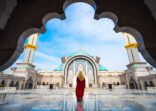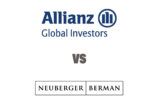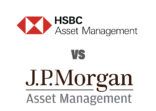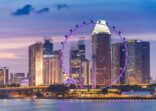However, the fee disparity is perhaps surprising, because the detrimental effects of a high expense ratio on fund performance has been well-established for several years.
For instance, Morningstar published an empirically-based report in May 2016 that showed that the “the expense ratio is the most proven predictor of future returns”. The conclusion was equally valid across different sectors and asset classes.
A glance at the long-term performances of Asia ex-Japan funds seems to bear out the Morningstar maxim.
Four out of the five funds with the lowest OCFs achieved stronger three-year cumulative returns than any of the five with the highest OCFs.
Among those charging big rates for admission are four funds with more than $1bn in assets under management (AUM) each – two managed by Templeton and two by Blackrock – so size does not seem to produce an expected reduction in expenses as a percentage of AUM, assuming most costs are fixed.
Justifying fees
Active fund managers justify their fees for a number of reasons. Typically, these include the cost of research, which tends to be higher for fundamental analysis compared with quantitative screening, and more for small-cap funds versus large-cap funds because of the extra digging and probing involved.
Emerging market funds might also require further labour on research and engender additional layers of trading complexity and costs.
However, these factors fail to explain the fee disparities.
Two of the most expensive Asia ex-Japan funds – Templeton Asian Smaller Companies (3.53% OCF) and Allianz Little Dragons (3.15% OCF) – focus on small-cap stocks, but so does the Aberdeen Standard SICAV I Asian Smaller Companies fund, which has a 0.24% OCF.
They all three also share an inferior performance to the funds with major holdings in the region’s largest companies.
These include the cheapest product – the JP Morgan SAR Asian fund (0.09% OCF) – which doesn’t invest in Hong Kong, China, Indonesia or the Philippines, so is probably able to cap its trading costs. Yet, the AB Asia Ex Japan Equity Portfolio (0.14% OCF) and Schroder ISF Asian Dividend Maximiser (0.17% OCF) are not similarly constrained, and only charge slightly higher fees.
Perhaps investors are being encouraged to pay a little extra for the brandname: Templeton has a reputation as a pioneer investor in emerging markets, and two of its Asian funds are the most expensive in the sample.
Asia ex Japan Funds – lowest OCFs
| Fund |
OCF % |
3-year cumulative return % |
Annualised volatility % |
AUM $ |
| JP Morgan SAR Asian |
0.09 |
47.71 |
13.15 |
754m |
| AB Asia Ex Japan Equity Portfolio |
0.14 |
47.71 |
15.65 |
381m |
| Schroder ISF Asian Dividend Maximiser |
0.17 |
47.24 |
10.95 |
253m |
| Aberdeen Standard SICAV I Asian Smaller Companies |
0.24 |
23.74 |
16.58 |
1.17bn |
| HSBC GIF Asia Ex Japan Equity |
0.25 |
60.28 |
15.24 |
490m |
Note: BOCIP Asia Quality Equity Fund has an OCF of 0.20%, but there is insufficient other information for inclusion in the table. Excludes index funds.
Asia ex-Japan Funds – highest OCFs
| Fund |
OCF % |
3-year cumulative return % |
Annualised volatility % |
AUM $ |
| Templeton Asian Smaller Companies |
3.53 |
31.70 |
12.82 |
1.51bn |
| Templeton Asian Growth |
3.52 |
35.54 |
14.55 |
3.34bn |
| Allianz Little Dragons |
3.15 |
12.56 |
13.62 |
182m |
| Blackrock GF Asian Dragon |
3.10 |
41.34 |
15.24 |
2.98bn |
| Blackrock GF Asia Pacific Income |
3.10 |
26.81 |
14.31 |
2.98bn |

















